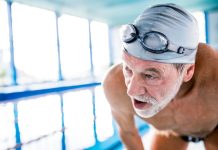
How fast a young stroke survivor can walk may predict whether they are ready to return to work, British researchers say.
One of every four people who has a stroke is younger than 65, and up to 44% of that group may not be able to return to work, mostly because they have difficulty walking.
Researchers analyzed the relationship between walking speed and readiness to return to work among a small group of stroke survivors in Wales.
The study found a walking speed of more than 3 feet per second was a critical threshold: Stroke survivors who walked more slowly were significantly less likely to return to their jobs.
“Stroke affects motor control and motor function,” said Hannah Jarvis, lead author of the study published Thursday in the American Heart Association’s journal Stroke.
“To return to work, you must be able to walk to your car, bus, office and meeting rooms.
If you can’t walk or you get tired easily, your ability to do your job is going to be seriously impacted,” said Jarvis, a research associate at Manchester Metropolitan University in England.
The study compared mobility in 46 stroke survivors, who were between the ages of 18 and 65, to 15 people who had not had a stroke.
Using a walking test, researchers measured how fast and far participants walked in three minutes.
Young stroke survivors were less efficient at walking than their healthy counterparts. So, walking at a similar pace required more effort and caused them to tire more easily.
Among the stroke survivors, 23% returned to work – and 90% of them walked faster than the critical threshold.
Those who returned to work walked almost 6 feet per second. Those who didn’t go back to work covered only 2 1/2 feet per second.
“There was a huge range in outcomes in our stroke population, highlighting the fact that some people recover quickly and can return to work, while others are so severely affected that they cannot go back to work,” Jarvis said.
According to the American Stroke Association, someone in the U.S. has a stroke every 40 seconds on average.
The walking speed test is “simple, low-cost and effective,” Jarvis said. “In addition, clinicians can use this measure to guide their patients during rehabilitation.
For example, they can focus on increasing walking speed and maintaining quality of walking in order to give their patients a chance of going back to work.”



